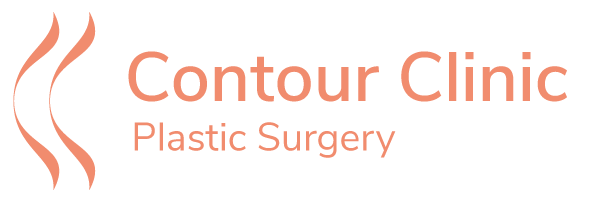Fat Transfer Augmentation
- Approximate duration: approximately 1 to 2 hours
- Anesthesia: General
- Recovery: up to 1 month

For whom is this intervention indicated?
Breast augmentation by Fat Transfer, or Fat Graft, is mainly aimed at women who want a natural alternative to breast implants. This procedure is particularly suitable for those who want a moderate volume, a more harmonious silhouette or a post-explant correction without introducing a foreign body into their body. It can also meet the needs of patients with little breast tissue who want a discreet and gradual improvement in the shape of their breasts. This approach is ideal for people who are healthy, have sufficient fat-donating areas and are looking for subtle, long-lasting and biocompatible results.
Why use this technique?
Dr. Nicolaidis was fortunate enough to hear the first formal presentation on fat transfer to the face by Sidney Coleman in 2000, when he was still working in New York. Fat is removed from the patient using liposuction, then concentrated and re-introduced in any area of the body desired. In order for the fat to survive, it has to be injected in small quantities and fine lines, surrounded by the patient’s tissues which will vascularize the fat.
In the years following Dr. Coleman’s presentation, progressively larger quantities of fat were transferred to other parts of the body, notably the breasts and buttocks. As larger quantities are injected in an area, more fat loses direct contact with the patients’ tissues, leading to resorption rates around 50% (meaning that 50 % of the transferred fat will disappear over time). If too much fat is transferred, cysts may form which can be misinterpreted on mammograms as possible breast cancer. A work-up then becomes necessary to eliminate possible breast cancer, yet another unpleasant experience for patients who have already suffered enough.
Is fat transfer to the breasts safe?
Initially cautious, Dr. Nicolaidis now proposes fat transfer as a safe alternative. After more than 25 years of use around the world, no study has demonstrated or even suggested an increased risk of breast cancer related to this technique.
The survival of the transferred fat depends on its direct contact with the patient’s tissues to ensure oxygenation and blood supply. This is why it is injected in very thin lines. When the volume transferred is too large, some of the fat dies, leading to volume loss, cysts or microcalcifications. The latter can be wrongly interpreted as cancer, requiring additional examinations.
In short:
- The less fat you transfer, the lower the rate of resorption
- The fewer complications, the longer lasting the results
This is why Dr. Nicolaidis favors small to medium volume transfers, even if it means planning more than one procedure to meet his patients’ aesthetic expectations.
Another advantage: This technique is not associated with breast implant disease (BII).
Is fat transfer possible at the time of explantation
Women who have removed their implants for health reasons, particularly in connection with BII, often wonder about the possibility of transferring fat to the breasts at the time of explantation. Dr. Nicolaidis responds to this request with caution.
It is important to understand that fat is lodged in the available spaces, not in a targeted way. If it gets into the area where the implants have just been removed, it will not survive and could lead to infection. For this reason, fat transfers carried out at the time of explantation are only considered:
- If the implants were placed under the muscle, creating a protective barrier
- If dissection around the nipples is minimal
In general, Dr. Nicolaidis recommends delayed fat transfer, between 3 and 6 months after explantation. This also makes it possible to correct any postoperative irregularities or asymmetries.
Benefits of Deferred Transfer
- Better fat distribution
- Larger possible injected volume
- Less risk of complications
- More natural and long-lasting results
Video addressing the topic
Surgical and post-operative details
Anaesthesia
Most cases require general anesthesia for maximum patient safety and comfort as well as more aggressive fat removal.
Surgical techniques
Fat is removed from unwanted areas using simple liposuction techniques. However, rather than throw out this fat, the fat is concentrated through numerous means and reinjected in areas lacking fullness. Care must be taken in order to avoid excessive injections in any given areas in order to avoid fat cell necrosis (or death), leading to more fat resorption, or cyst formation.
Recovery
Patients are generally asked to wear a compression garment for one month after surgery in the liposuctioned areas. On the other hand, we try to avoid pressure on the regions receiving the fat.
Return to work
In the case of fat transfers under local anesthesia (small amounts of fat liposuctioned and transferred to Dr. Nicolaidis’ office), patients can return to work without delay. For larger fat transfers, patients can usually return to work within a few days of a fat transfer, although the swelling and bruising may remain for a few weeks.
Possible complications
- Resorption of up to 50% of the injected volume
- Skin irregularities (folds, hollows)
- Cysts, infections, microcalcifications
- Loss of fat cells
Post-surgery advice
The first week
- Keep your dressings dry and clean;
- Wash yourself with a sponge;
- Avoid putting pressure on the area where the fat was injected;
- Wear your compressive garments (if provided) at all times for the areas liposuctioned;
- Walk for at least 5 minutes every hour of the day (avoid staying in bed constantly).
Your first post-operative appointment for fat injection with Dr. Nicolaidis is very important, even if you feel very well. Call us as soon as possible if you do not have an appointment already scheduled (the first visit is normally scheduled before surgery).
After the first week
- Keep your dressings dry and clean until further notice by Dr. Nicolaidis;
- Avoid putting pressure on the area where the fat was injected for a minimum of 2 additional weeks;
- Wash with a sponge or with a telephone shower, taking care not to wet your bandages;
- Avoid exposing your scars to the sun for a period of 6 months;
- Before taking a bath or shower again, you should ask Dr. Nicolaidis if you can;
- Continue wearing compressive garments (if provided) until Dr. Nicolaidis says otherwise;
- In order to avoid blood clot complications, keep moving (walk regularly during the day).
Please note
- It is normal to have bruising in the fat injection area in the first few weeks after surgery.
- For your comfort, make sure to take your painkillers as prescribed.
* Does not constitute a guarantee of results
Ready to learn more?
Schedule a consultation with Dr. Nicolaidis and discover his approach to breast surgery, body contouring, and explantation.



